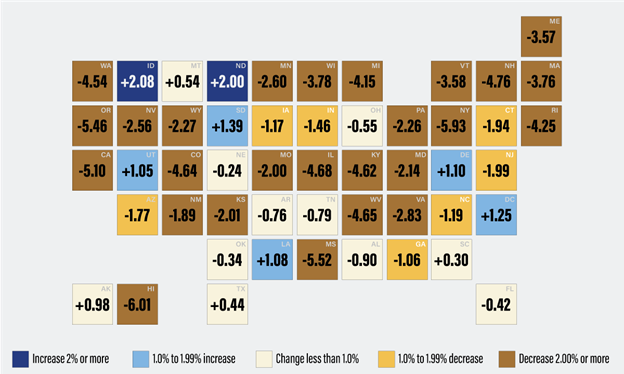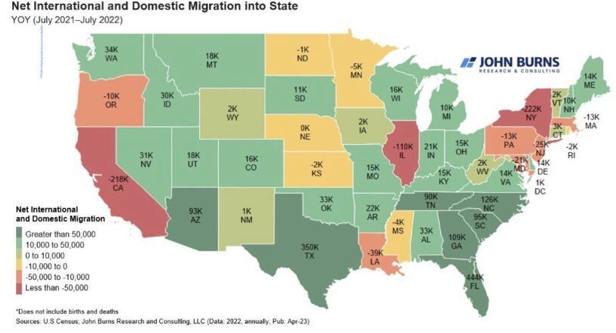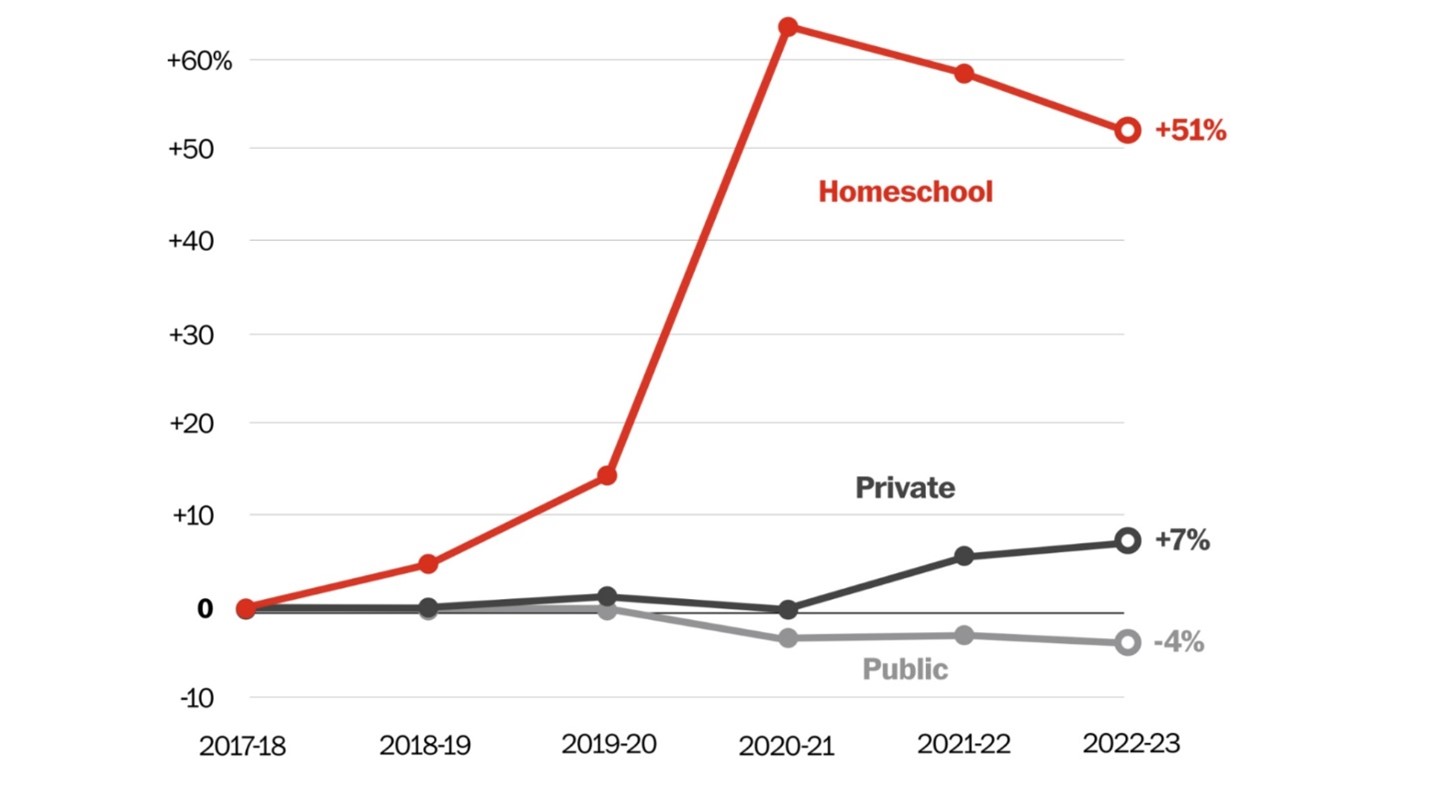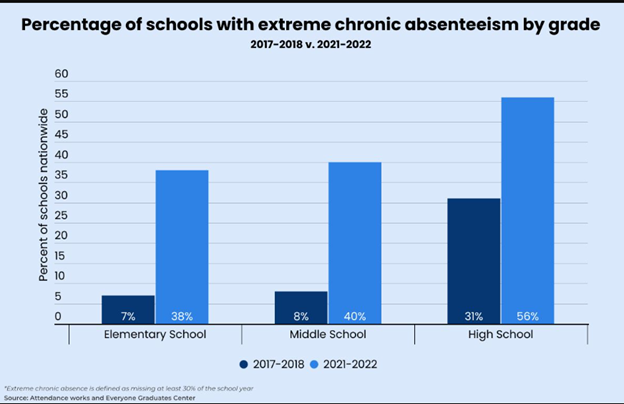America’s response to the COVID-19 pandemic represents an unmitigated disaster for children, a huge number of whom dropped out of school. The 74 million published the below graphic on public school enrollment trends by state for the 2021-2022 period:

For those squinting at their phones, blue indicates enrollment growth, whereas everything else is some sort of decline. As avid Next Steps readers will recall, Utah public school enrollment shrank in 2023 (the year after the data in this graphic). Thus at least one of the blue states shifted colors the next year.

Multiple factors are at play here: first, outmigration. Notice the big changes in big states such as California (-5.1%), Illinois (-4.86%) and New York (-5.93%). The public school systems of just these three states lost approximately 575,000 students in a single year, a loss greater than the enrollment of the public school system of Connecticut.

We have more to account for in this story than state outmigration obviously, which you can discern from examining the trends in destination states such as, in order, Florida, Texas, North Carolina, Georgia and Arizona. These states had considerable increases in population enrollment in 2021-22, with a total gain of residents of 1,122,000. Amazingly, however, using Digest of Education statistics data, the percentage loss/gains data from the above graphic and your humble author’s Texas public school math skills, Florida, Texas, North Carolina, Georgia and Arizona themselves lost more than 42,000 public school students even as they gained well over a million new residents!

Enrollments in Florida, Texas, North Carolina, Georgia and Arizona would have declined by a much greater amount in the absence of 1.1 million people moving to their states. Where did the missing students go?
Charter schools nationwide gained 300,000 students while district schools lost 1,500,000 between the 2019-2020 and 2022-23 school years. The increased charter enrollment, however, is included in the overall public school figures and thus does not account for any of the missing students. Some unknown but certainly huge number of students dropped out of school during the COVID-19 pandemic.
The ongoing baby bust is another factor at play. Young adults started this somewhere around 2008 and show little sign of stopping. Between 2008 and 2020, for example, the average size of statewide public school kindergarten classes of Hawaii, New Mexico, Connecticut, and West Virginia shrank by 20% or more.
Some families took control of the education of their children by either homeschooling or attending private schools. The Titanic was not carrying enough lifeboats, however, as one estimate of private school enrollment increases accounted for only 14% of public-school enrollment decline. It is difficult to quantify, but it seems certain that dropouts outnumber students escaping on homeschool or private school lifeboats.

The bad news, sadly, does not stop with dropouts. A great many students still enrolled in schools seem not to view school attendance with the same sense of urgency as before the pandemic. Many argued that school attendance was non-essential, and a great many students seem to have adjusted their attitudes and practices accordingly:

It is possible that some of these students fear the documented increases in violence and bullying occurring. Either way it is difficult to make up for learning loss when you don’t come to school. The de facto plan of the public school system in mitigating COVID-19 era learning loss appears to be aging the current generation of students out of the system.
The COVID-19 response fiasco unfortunately was simply an extension of a pre-existing trend. As The Economist magazine noted in 2012:
In rich countries, this generation of adults is not doing well by its children. They will have to pay off huge public-sector debts. They will be expected to foot colossal bills for their parents’ pension and health costs. They will compete for jobs with people from emerging countries, many of whom have better education systems despite their lower incomes.
Children are our future, but the American motto seems to be “Give them hell and let them lead the way.”


